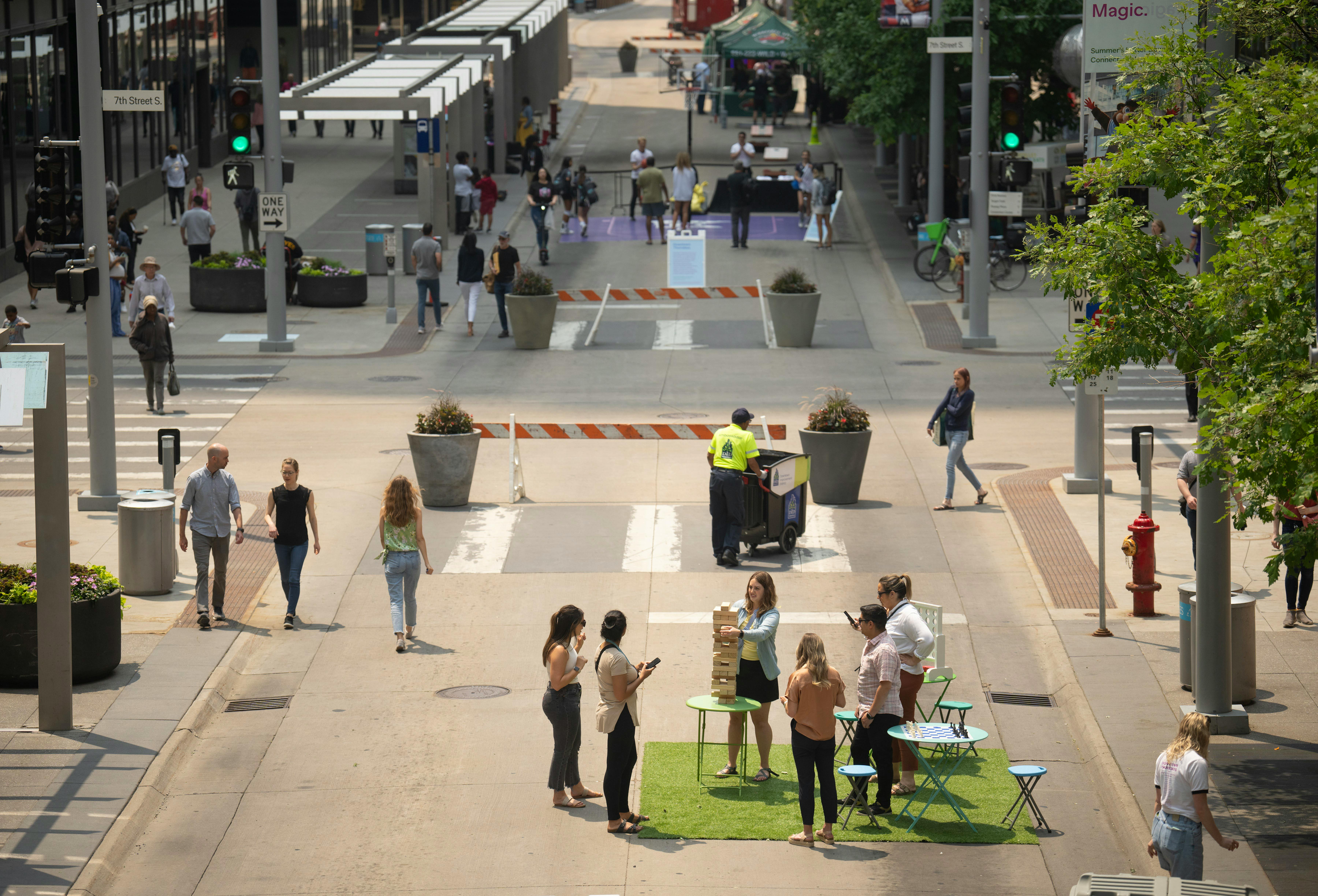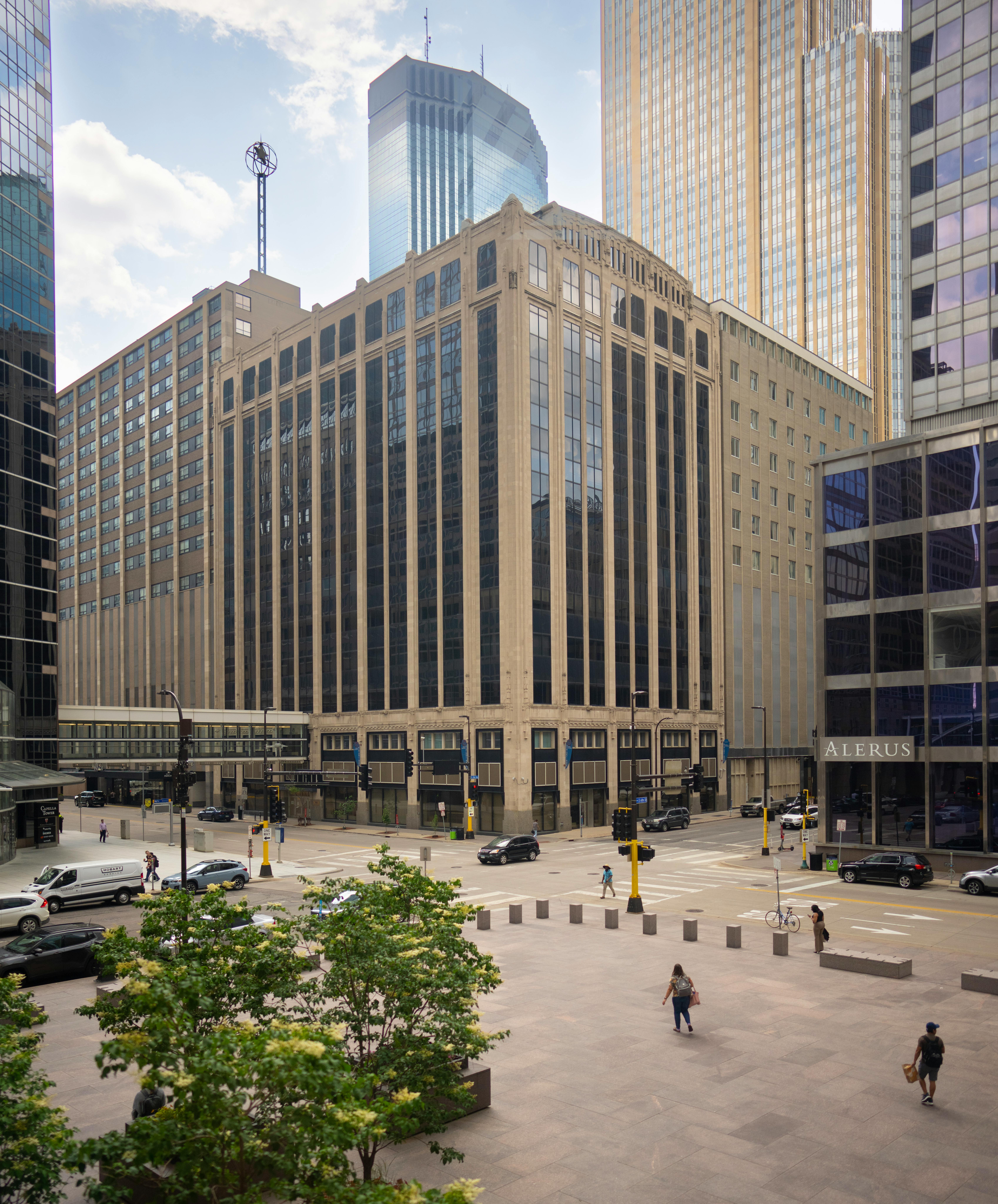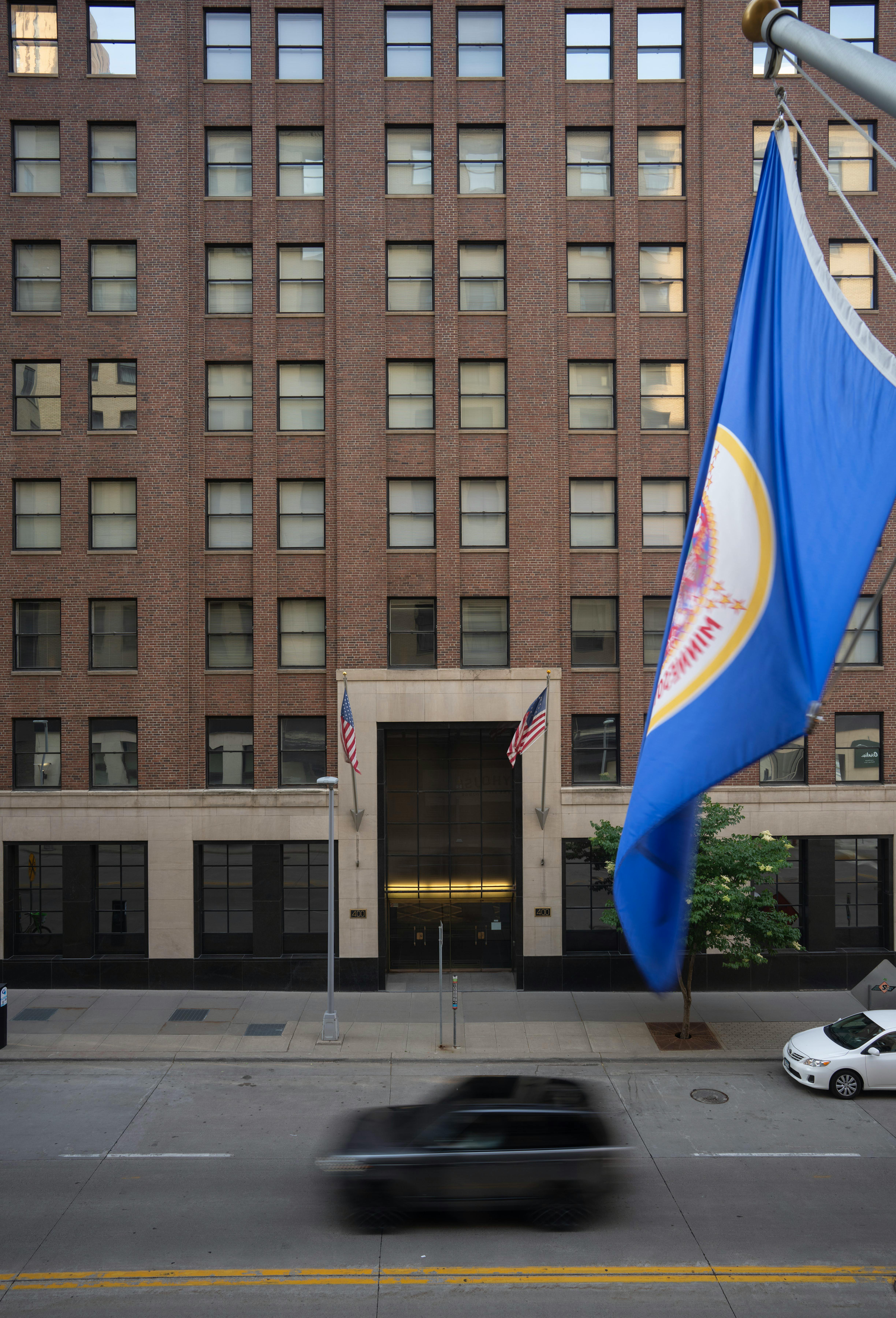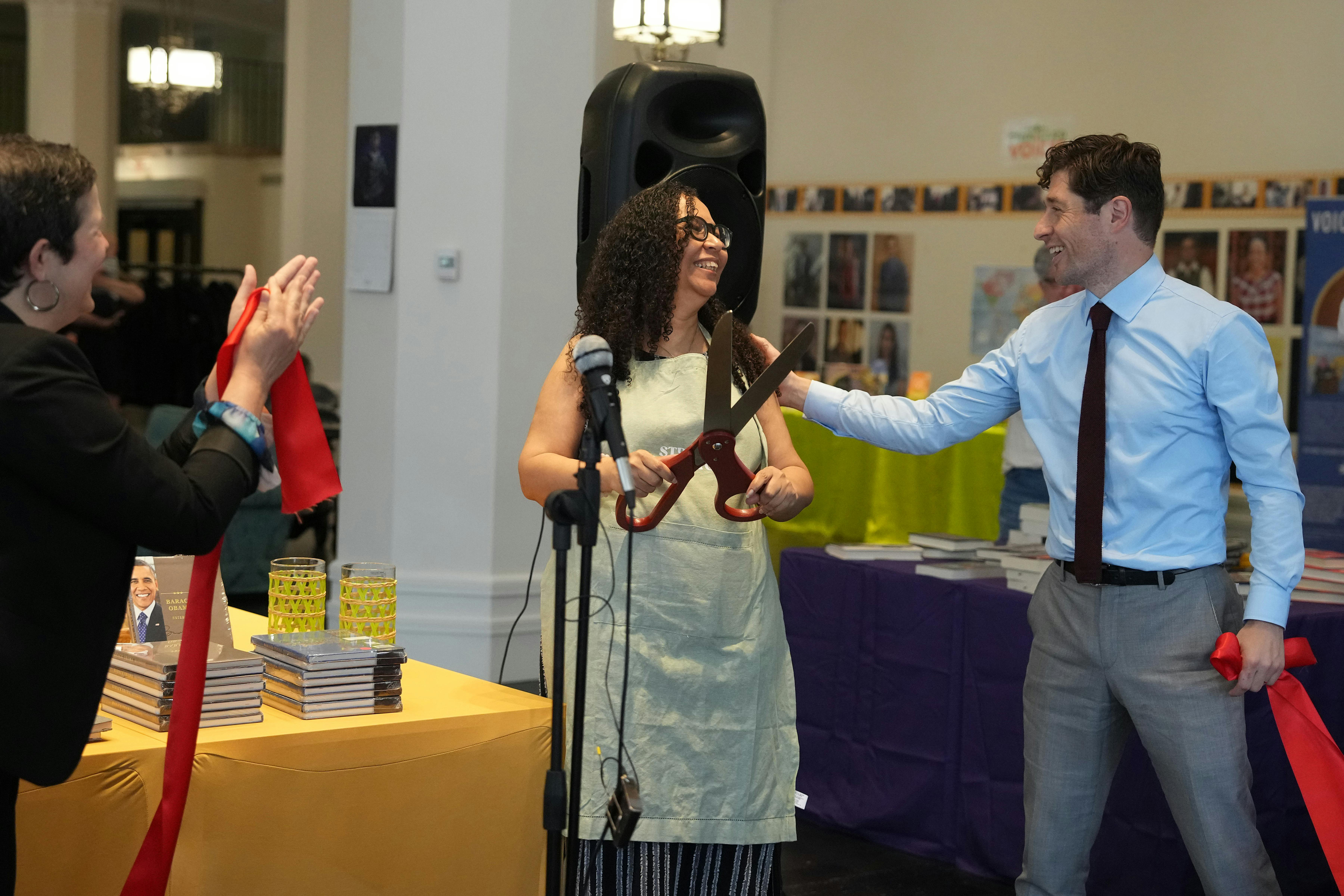Earlier this month, Minneapolis Mayor Jacob Frey pitched a vision for a post-pandemic downtown starting with an overhaul of Nicollet Mall, where buses now rumble past dark storefronts and sparsely populated sidewalks.
The plan would transform the mall into a more pedestrian-friendly gathering space that moves buses to other streets, allows drinking while strolling during events and gives businesses more flexibility to light up, animate or automate their signs.
Proposals to transform the city's central business district (CBD) into a Times Square-like destination come as Minneapolis — along with other major metro areas like San Francisco and New York City — struggles with higher office vacancies than in the Great Recession, shuttered retail and distressed commercial real estate.
The value of downtown office buildings is declining while properties in other parts of the city are rising. And while downtown accounts for just a sliver of the city's area, it makes up slightly more than one-fifth of its total tax base. That's bound to change if values continue falling and property owners appeal their valuations, potentially forcing homeowners to shoulder a larger share of the city's tax burden.
Over the past year, the market value of downtown commercial buildings fell 2%, according to the city assessor's office. That decline follows a 23% increase in property tax appeals by downtown commercial property owners in the first full year of the pandemic, the same year the assessed value of some of the city's most expensive office buildings peaked.
Since 2020, the value of the IDS Center, for example, declined 20%, or more than $62 million. The IDS Center owners are already struggling to make payments on their $154 million mortgage, and the Hilton hotel sold for $225 million in a March foreclosure auction.

The Nicollet Mall farmers market announced its exit from downtown in April, ending a more than 35-year run. By the end of August, AT&T plans to move at least 260 employees out of its namesake 34-story tower — which it has occupied since 1992 — and into a suburban facility.
"We're nowhere where we want to be," developer Chris Sherman said. "But downtown is reimagining itself."
Nearly a third of office space is dark
Sherman is spearheading more than $700 million of downtown construction projects. If he has his way, downtown will be at the heart of what many are calling a playground city: An urban core that leans more on residents than office workers to populate its streets. Gone, experts say, will be the monoculture of office workers and business travelers that once existed.
"We aren't going to get back to 100 percent office occupancy," Frey said. "Rather than fight it tooth and nail, rather than cling white-knuckled to what once was, we have to embrace more of a flexibility of use."
About 65% of downtown office buildings are now occupied, but Frey expects that figure to top out at only 75% to 80%. That means nearly a third of all downtown office space is dark, a rate not seen in decades that even outpaces the financial woes following the dot-com bubble and the Great Recession, when the vacancy rate never exceeded 24%.
In the meantime, owners of many vacant buildings are pitching their properties as potential residential conversions. Two deals closed recently, and interest in the others is high, brokers said. It's similar to the transformation of downtown's North Loop and Mill District neighborhoods, where old warehouses were transformed into apartments and condos and later shops and restaurants.
Frey pointed to the Northstar Center East building as a potential model in the CBD, as Sherman Associates is converting the 13-story office building into 216 apartments. Just a few blocks away, another developer is redoing the 1010 Metrodome office building into nearly 180 rentals.
The push to convert office buildings into apartments comes at a somewhat challenging time for many downtown rental owners. Apartment vacancies in the city increased during the pandemic, and while some have declined, the vacancy rate in downtown is 7.6%. So making any new dwellings affordable to attract a broader rental pool is key.
Still, not every office building is suitable for conversion, especially more modern buildings with windows that don't open. And the situation is likely to take five to 10 years to work itself out as companies finalize their return-to-work plans.
"We're in uncharted waters," said Tom Tracy, executive director with Cushman & Wakefield.



'Front doors to the region'
The lifeblood of Murray's — the famed steakhouse that's operated since 1946 — during the weekdays is business travelers and workers.
"A lot of people just aren't coming down to [downtown] anymore," co-owner Tim Murray said. "A lot of it is just people got out of the habit of doing it. I think it started with fear [of] being downtown."
While statistics show violent crime in downtown is actually down after a spike during the pandemic, Murray said people's wariness of it has hurt business. Today, almost 40% of restaurants, shops and other available retail space is vacant in downtown, the most in nearly a decade.
"If something happens downtown, whether it's 3 o'clock in the afternoon or 3 o'clock in the morning, it gives this perception of downtown is unsafe, and that is not true," said Minneapolis community safety commissioner Cedric Alexander.
Since he became commissioner last year, Alexander has helped the Minneapolis Police Department address concerns from business owners and others about downtown safety. This includes initiatives like Operation Endeavor, a push by law enforcement and community partners to reduce violent crime in the city, he said. There are more safety efforts this summer, including plans for the upcoming Taylor Swift concerts and Pride celebrations next weekend.
"Come downtown," Alexander said. "We got you."
At the IDS Center, the Roti Mediterranean fast casual restaurant and other shops are still open, but shoppers learned this past week Hubert White, a stalwart retail presence on Nicollet Mall for decades, will close Aug. 1. Banana Republic is also gone, as is the two-story Nordstrom Rack.
Nordstrom has a lease that extends through fall 2027, and there is a lease in negotiation for the Banana Republic space. The IDS Center also partners with the Minneapolis Downtown Council to lease space for its Chameleon Shoppes pop-ups for diverse business owners.
Retail vitality is an amenity for downtown workers, giving people a reason to go to the office. The stores and restaurants are also important for the thousands who call downtown home and want services like grocery and convenience stores close to home. It also helps the city attract major sporting events and concerts.
In short, vibrant downtowns are part of what makes the regional and state economy successful, said Peter Frosch, chief executive of economic development partnership and regional promoter Greater MSP.
"In some ways, our downtowns are our front doors to the region," Frosch said. "It's how we welcome and introduce most people to our region and to our state. And so we all have a stake in making that experience positive and inviting and exciting."
Despite the challenges, the downtown office and retail scene has made some gains recently.
RBC Gateway, a 37-story tower with more than 530,000 square feet of office space at the end of Nicollet Mall, was nearly fully occupied when it opened last year. Four blocks away, construction is nearly complete on North Loop Green, a multi-acre, mixed-use project with housing and 350,000 square feet of office space. That has already landed several major tenants, including Värde Partners, which is moving from the AT&T Tower for a 12-year lease.

And farther down the mall, Strive Bookstore recently opened in the former JB Hudson jewelry store at the Young Quinlan building. Just a few years ago, the Black-owned small business would never have considered such a prime location, especially with Barnes & Noble just down the street.
"I probably wouldn't have stood a chance," Strive owner Mary Taris said.
